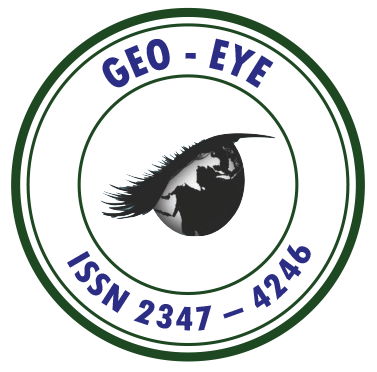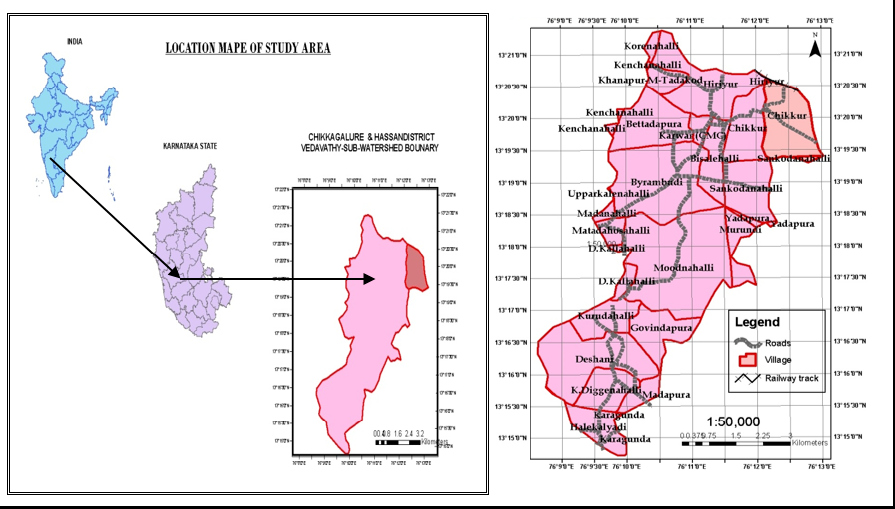
Geo-Eye
Department of Geography & GIS

Department of Geography & GIS

Geo-Eye
Year: 2018, Volume: 7, Issue: 1, Pages: 43-52
Original Article
Shilpashree K Mayachar1, N Nandini2, K S Ramesh3
1 Research Scholar, Department of Environmental Science, J B Campus, Bangalore University
2 Professor, Department of Environmental Science, J B Campus, Bangalore University
3 Scientist, RRSC-South, NRSC Bangalore
Received Date:19 March 2018, Accepted Date:22 May 2018
IRS and GIS technology are extensively used for basin analysis which helps in monitoring the development and management of watershed and its catchment areas. The present study was carried to estimate peak discharge of two mini and micro watershed of the Krishna river basin, the two watersheds selected for the above study are Chikkur sub-watershed and Lailapura micro watershed which forms a part of Vedavathy river sub-basin and falls under Krishna river basin lying in between Karagunda and Hiriyur village of Chikamagalur & Hassan districts in Karnataka. The satellite image used for the study are Ortho_rectified Cartosat -1(2.5m), digital elevation model (DEM) data & LISS-IV (5.86m) are used for extraction of basin Morphometric parameters, database generation using NRIS resource layers and Automatic delineation of the watershed under Arc GIS Environment. Morphometric Analysis of Chikkur subwatershed have shown less relief ratio, high ruggedness number, time of concentration, drainage density stream frequency, mean bifurcation ratio, and less form factor. Lailapura micro watershed has shown high relief ratio, form factor and time of concentration fewer ruggedness numbers, stream frequency. The peak discharge of Chikkur subwatershed is 46.56 cusecs and Lailapura micro watershed is 10.31 cusecs for 160mm of rain respectively.
Keywords: subwatershed, Krishna river basin, Vedavathy river subbasin, and Morphometric Analysis, peak discharge estimation
© 2018 Mayachar et al. This is an open-access article distributed under the terms of the Creative Commons Attribution License, which permits unrestricted use, distribution, and reproduction in any medium, provided the original author and source are credited.
Published By Bangalore University, Bengaluru, Karnataka
Subscribe now for latest articles and news.